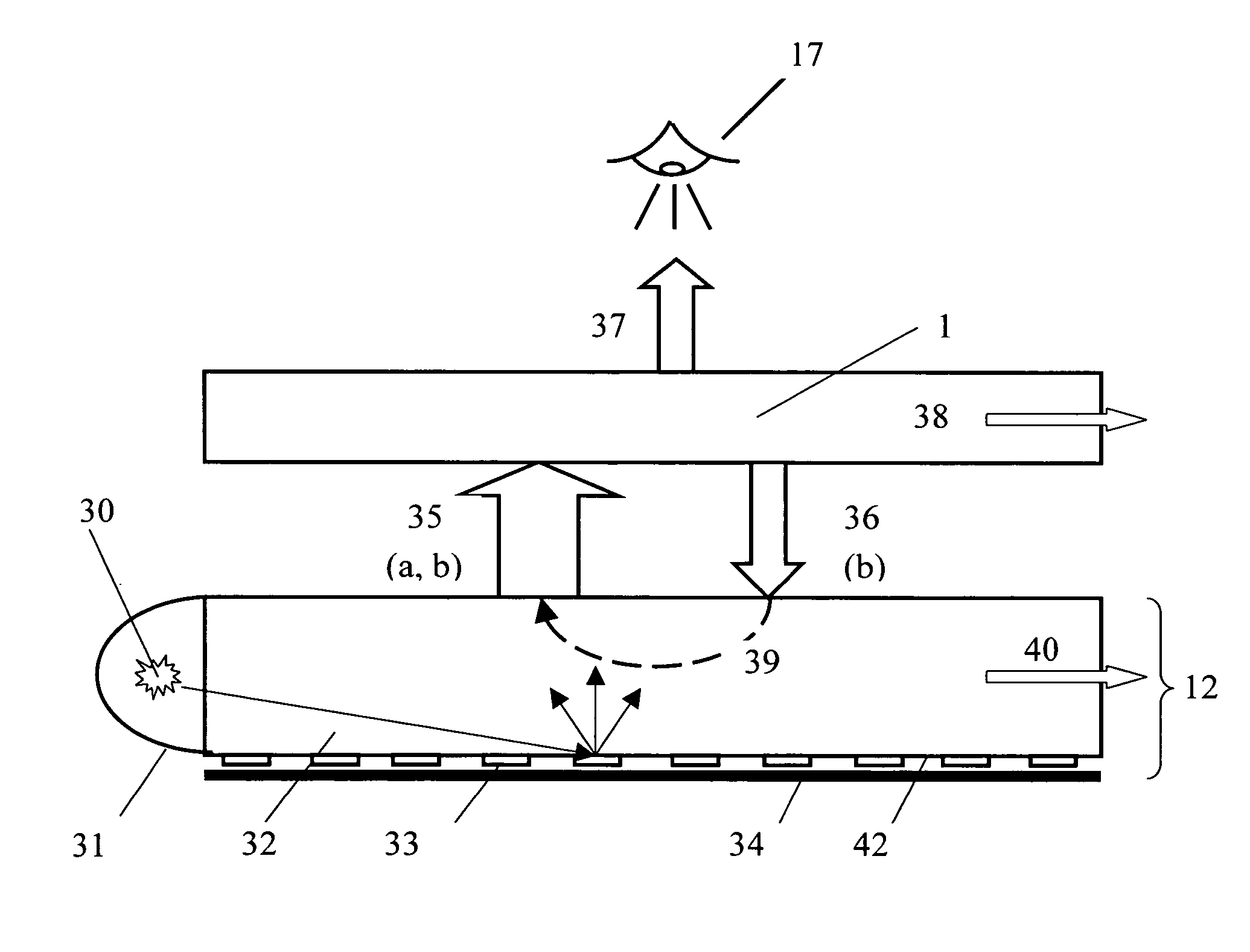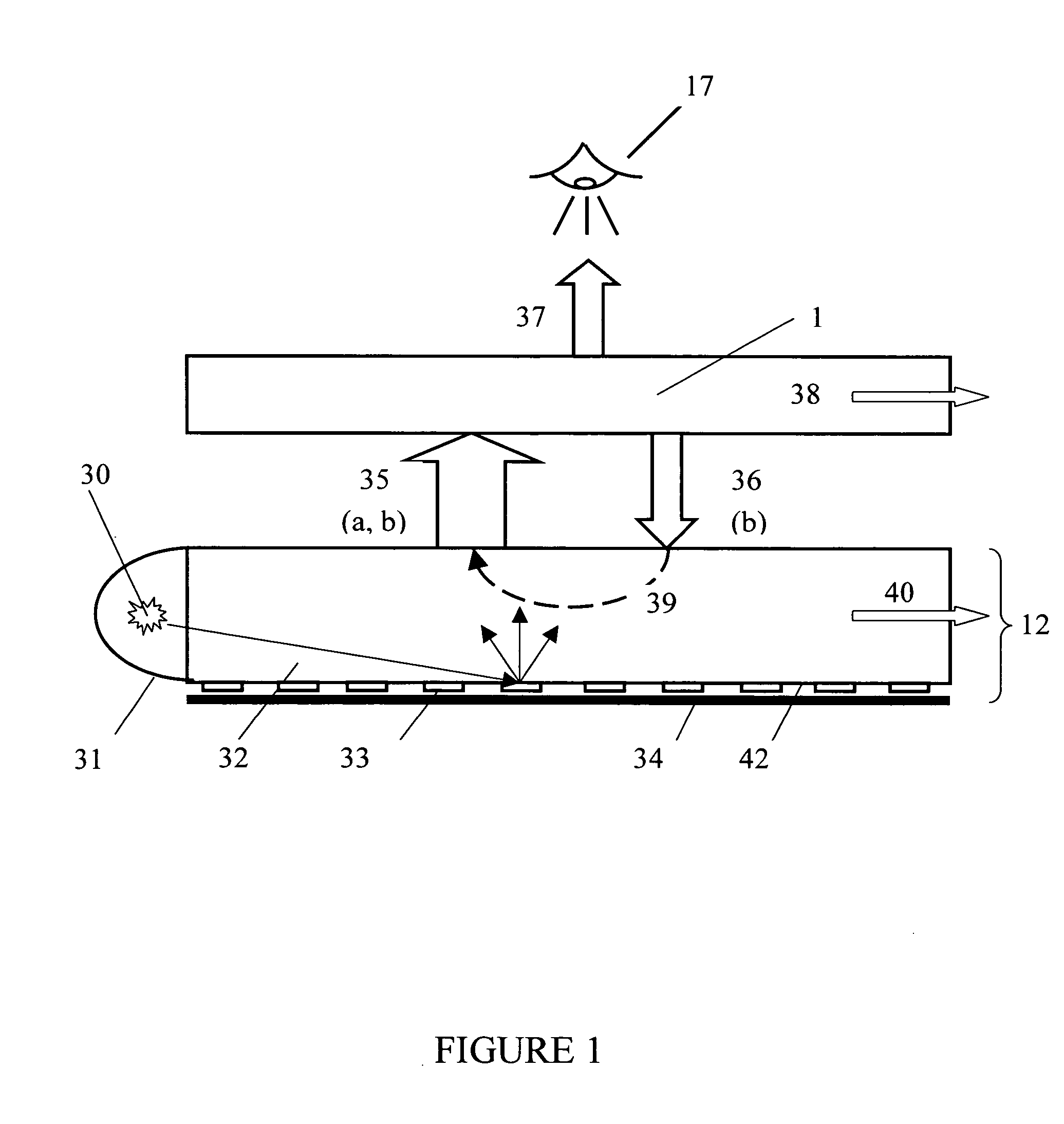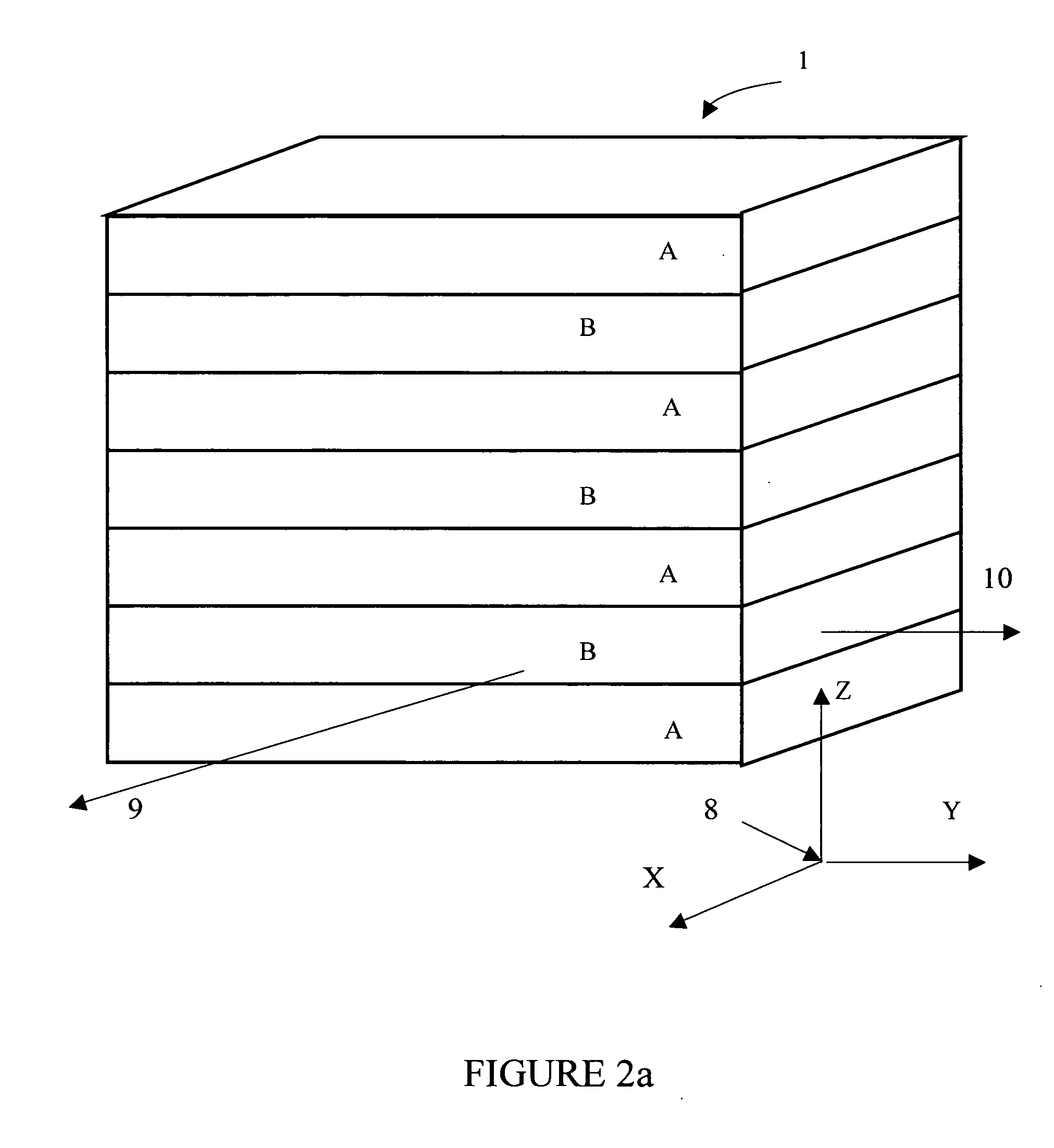Polarized interference recycling backlight module and liquid crystal display incorporating the same
a backlight module and polarized interference technology, applied in the direction of instruments, polarising elements, optical light guides, etc., can solve the problems of degradation of the performance of the backlight module, the lcd device does not emit light by itself, and the transmission of incident light is relatively high
- Summary
- Abstract
- Description
- Claims
- Application Information
AI Technical Summary
Benefits of technology
Problems solved by technology
Method used
Image
Examples
example 1
[0097] The typical interference polar (I-Polar) can be constructed using alternating layers of birefringent and isotropic materials deposited onto transparent substrate. Said interference polar has a transmission axis AB. If the unpolarized light is incident onto the interference polar, one part of this light, having the polarization approximately orthogonal to said transmission axis AB, is reflected from the interference polar. Desired performance can be achieved by manipulating the refractive index and thickness of each individual layer and the total number of layers. One of the most important aspects of the polarizer design is selection of the base structure. In the following consideration, normal incidence is assumed and the substrate index of refraction is fixed at 1.5. Typically, the interference polar can be designed in the form of a periodic structure of double layers with high and low refractive indices in the plane of polarization of the incident light. That is, the same p...
PUM
 Login to View More
Login to View More Abstract
Description
Claims
Application Information
 Login to View More
Login to View More - R&D
- Intellectual Property
- Life Sciences
- Materials
- Tech Scout
- Unparalleled Data Quality
- Higher Quality Content
- 60% Fewer Hallucinations
Browse by: Latest US Patents, China's latest patents, Technical Efficacy Thesaurus, Application Domain, Technology Topic, Popular Technical Reports.
© 2025 PatSnap. All rights reserved.Legal|Privacy policy|Modern Slavery Act Transparency Statement|Sitemap|About US| Contact US: help@patsnap.com



